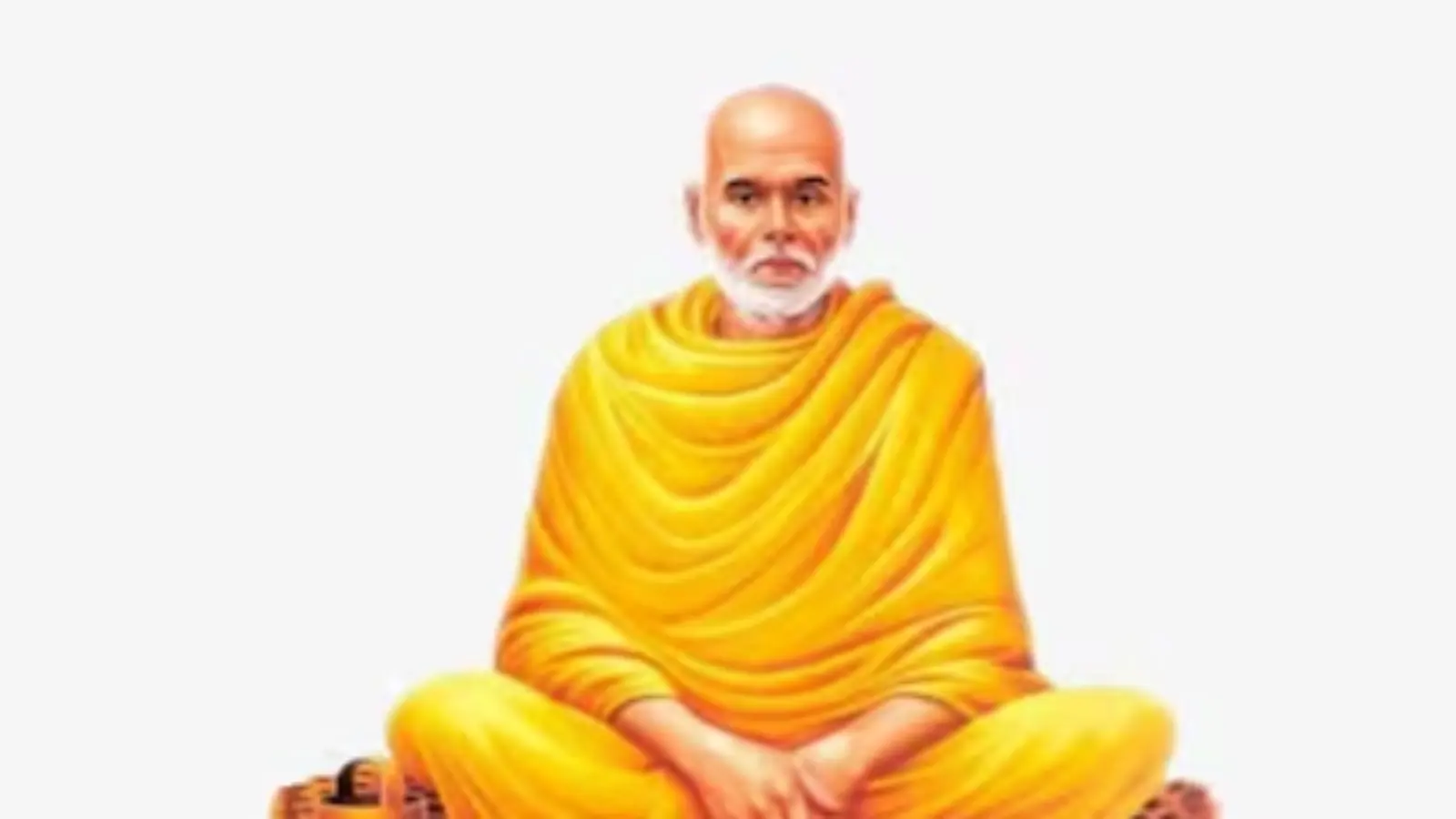Copyright news18

Sri Narayana Guru, a monk who followed the Advaita tradition, is considered one of the most prominent social reformers from Kerala. The term social reformer has, however, fallen out of fashion in recent times, and the preferred term now is renaissance leader. The word renaissance implies a rebirth or a revival. Of course, it is in this sense that the term is used when we speak of the European Renaissance. In the European context, the Renaissance was seen as a revival of the values and spirit of the classical Greek world. Although there was a conscious effort in India to reimagine and reinterpret aspects of Hindu religiosity, it is doubtful whether any such revival was ever the goal or outcome of the progressive movements here. That, however, is a topic for another discussion. For now, let us return to Sri Narayana Guru. Active from the closing decades of the nineteenth century through the first quarter of the twentieth, Guru was born into a family belonging to the Ezhava community, one of the communities that was considered socially and economically backward. After his extensive travels across India, Guru eventually settled in Kerala. He composed numerous devotional hymns dedicated to the Hindu pantheon, and his poems and elegies are still regarded as some of the finest works in the language. At the heart of his thought and teaching was a radical rejection of the caste system: he proclaimed that there is, and can be, only one caste: the human caste. He initiated people into sannyas without bothering about their caste. He consecrated deities in temples, something that, according to conservatives, he was not supposed to do as someone from a backward caste. Guru proclaimed that all religions, whether Hinduism, Christianity, or Islam, convey the message of compassion. He was a radical religious figure. He attacked the caste system and held that all religions are essentially the same. Yet one could argue that his rejection of caste was deeply rooted in Hindu texts themselves, especially when one compares some of his aphorisms with texts like the Sāṃkhya Kārikā. Guru passed away — or attained samadhi, the term traditionally used to describe the passing of sannyasis — in 1928. Three years earlier, in 1925, the Communist Party of India had been formed. Although the party was founded in 1925, it was still not affiliated with the Communist International and did not have a full-fledged programme. That happened much later, in 1934. Later still, socialist ideas inspired by the October Revolution and the formation of the USSR began to attract the attention of a few young and active politicians in Kerala. In 1937, the first Communist Party group in Kerala was formed, which operated within the Indian National Congress. It took many years after Guru’s passing for the Communist Party to establish itself in Kerala. Yet, decades later, one of the most prominent images the party displays in its posters, from local meetings to election rallies today, is that of Guru. He remains a key icon of the Communist Party in Kerala. The party intelligentsia often organises seminars and public discussions on Guru, and his messages are regularly quoted by party leaders. At least twice a month, some party apparatchik somewhere in Kerala delivers a talk explaining why Guru’s message holds the greatest relevance in contemporary Kerala, and more broadly, in India. This, of course, comes with its own problems. One might ask: why is a monk who followed the Advaita tradition — a soteriological school of philosophy associated with Hinduism — important to the Communist Party? How can a “renaissance” spearheaded by a communist movement be linked to a major spiritual figure — one who composed hymns to deities ranging from Vinayaka and Siva to Vasudeva and Vishnu? The party’s intellectuals respond that the Guru does not belong to any specific religion or caste. To defend this position, they cite a declaration by the Guru in which he stated that he had transcended the distinctions of caste and religion years ago and that he does not belong to any particular caste or faith. This, along with other writings in which the Guru extols Prophet Muhammad and Christ alongside Sri Krishna and Shankaracharya, is presented by leftist intellectuals as evidence of his secular outlook. A sannyasi — especially an Advaitin — saying that he has transcended the limitations of social constructions is neither new nor remarkable. Advaitic texts are replete with such utterances about transcending caste and religion. “Varnāśramonaiva kulaṃ na jātiḥ,” declares the Avadhūta Gītā: in the Brahman, there is no race, caste, or lineage. “Na tvaṃviprādiko varṇo nāśramī…” proclaims another text, the Aṣṭāvakra Gītā: you do not belong to the Brāhmaṇa or any other caste; you have no race and do not occupy any particular station in life. It must be in this sense that the Guru, too, said, “I have no caste.” The fact that his declaration reads, “I have transcended the distinction of caste and religion years ago,” makes it even clearer that the statement arises from a philosophical, rather than a political, motivation. So why does a communist party that typically rejects religion and faith, and whose ideology is materialistic and atheistic, depend on a spiritual mystic and promote his message? The reason lies in electoral demography. The Guru is a major influence and the symbolic face of the Ezhava community, the community into which he was born. The Sree Narayana Dharma Paripalana Yogam, popularly known as the SNDP, was founded by the Guru with the vision of creating a movement that transcended caste barriers and uplifted the backward communities. Today, however, it functions largely as an organisation associated with the Ezhava community. Although the Guru later distanced himself from the SNDP, the organisation continues to claim his legacy and remains a major pressure group in Kerala. Traditionally, the Ezhava community has backed the Left in elections. During its formative years — in the 1930s and 1940s, when the upper castes and elites were at the forefront of the Indian National Congress, the other major political party with a strong presence in Kerala — the Communist Party was far more inclusive. Many leaders such as V.S. Achuthanandan, K.R. Gowri Amma, K.P. Gopalan, and P.K. Chathan Master, who were born into backward castes, rose to prominence within the Communist movement. For a party that was formed through farmers’ movements and labourers’ unions, whose members were predominantly from the backward castes, this was only natural. The progressiveness of the party at the time of its founding also contributed to this. The Ezhava community is the single largest Hindu group in Kerala, comprising about 23 per cent of the state’s population. This makes it all the more important for the party to secure the continued support of this bloc. The religious identity of this group therefore becomes politically significant, and the party must handle it with subtlety. On one hand, it has to ensure that the religion of the Ezhavas is distinguished from the dominant form of Hindu-ness associated with forward castes and upper-class elites. On the other hand, this rejection of the dominant religion should not alienate the core electorate by suggesting that their beliefs have no place within the party. There must, therefore, be an acceptance of the religion of the masses, coupled with a rejection of the faith of upper-caste Hinduism — or ‘Hindutva’, as the party would call it. At the same time, this acceptance of faith should be framed in a way that appears progressive, at least outwardly. Most political parties in Kerala face a similar conundrum — and most of them walk on eggshells. Any attempt to pander to mainstream Hinduism risks being branded as sympathy for the Sangh. Conversely, any effort to distance oneself from Hinduism invites accusations of minority appeasement — and, in Kerala, minorities are not quite minorities. Their numerical strength and social presence make them a decisive force in the state’s political landscape. This dilemma becomes even more acute for a communist party that prides itself on its commitment to rationalism. The alchemy of progressiveness, or what is often described as renaissance, must therefore be carefully balanced. During the Sabarimala controversy in 2018, the party may have overreached. It endorsed the entry of women of all ages into the Sabarimala temple and formalised its position through an affidavit submitted to the Supreme Court. The decision was initially hailed as revolutionary and even compared to the Temple Entry Proclamation. However, the outcome proved otherwise, as the move was widely perceived as an affront to the rituals and traditions of the temple. Now that the election is nearing, the party is attempting to mitigate the damage through the Global Ayyappa Sangamam, it organised recently. Communist parties in India have long maintained that they are not opposed to faith or religion. However, this has always been, and continues to be, a conditional stance. At a time when the Left is engaged in what it perceives as a political battle with the BJP, it is imperative that they are not seen as pandering to the faith and rituals of Hindus in general, as this could be interpreted as hypocrisy or tacit support for Hindutva practices. At the same time, they cannot wholly reject such rituals either, since their voter base — though largely composed of the backward castes — continues to practice Hinduism. Moreover, if the party has to defend the practices of other religious groups, a cause it is often unusually eager to champion in order to prove its secular credentials, it must also defend the practices of Hinduism, a task that at times leads to rather awkward outcomes. Two years ago, the Speaker of the House, a Communist Party leader, made a remark about Ganapati being a “myth”. When some took offence and it became a talking point, the party secretary initially defended the Speaker. However, during a press conference, someone asked the secretary whether the idea of “myth” extended to the beliefs of Islam as well. He immediately sensed the trouble and denied ever having referred to Ganapati as a myth. He also claimed that the Speaker had never said such a thing either. Similarly, in 2023, an MLA was asked to explain why he arranged the Annaprasana ceremony of his child at the Guruvayur Temple. This, while Muslim cadres proudly post their Haj pilgrimage photos on social media. The party might not have pursued the matter further, and in any case, no details of any reprimand for visiting the temple were reported — probably because doing so would have highlighted the fact that Muslim cadres are not asked to explain their expressions of faith. This careful choreography of appeasement is now taking a U-turn. A few years ago, when a former disciple of Mata Amritanandamayi wrote a book against her, the party’s TV channel was quick to send its representative abroad to conduct a detailed interview with the author and gather further allegations and details. Come 2025, a minister visited Mata Amritanandamayi, hugged her, and even gave an affectionate kiss on her forehead. The party’s rationalism and progressiveness have always come from a planned position, one that is more about convenience than conviction. The secularism it claims is often transitory and changes based on the needs of electoral maths. The appropriation of Sri Narayana Guru by the Communist Party exemplifies this selective application of ideology. The party reinterprets the Guru’s spiritual humanism and insistence on the unification of all religions as emblems of social justice and egalitarianism, which fit well with its political narrative. But this use of the Guru takes away his spiritual depth and makes him out to be an atheist reformer, which he was not. What emerges, therefore, is not a constant philosophical commitment to rationalism or equality, but a practical use of symbols that speak to the people. The Left’s idea of Kerala’s “renaissance” has now turned into a performance. The ideological colour, whether saffron, green, or red, is ultimately inconsequential, akin to Deng Xiaoping’s cat. The important thing is whether it can catch that hard-to-find mouse of political power. Prajesh is a commentator with a research degree in philosophy from the University of Sheffield, focusing on the intersections of culture, history, and politics. Views expressed in the above piece are personal and solely those of the author. They do not necessarily reflect News18’s views.



